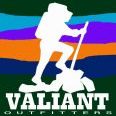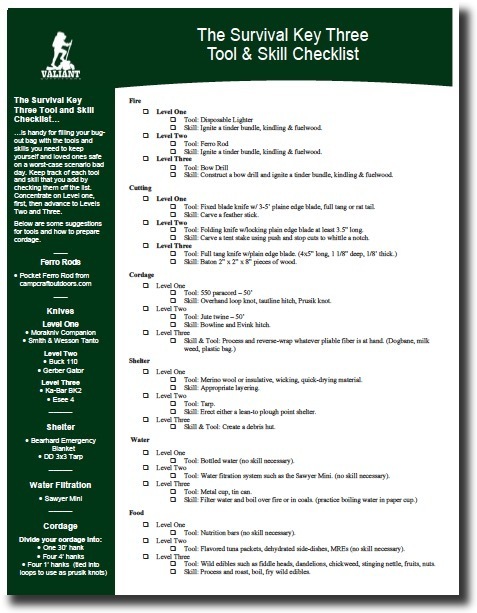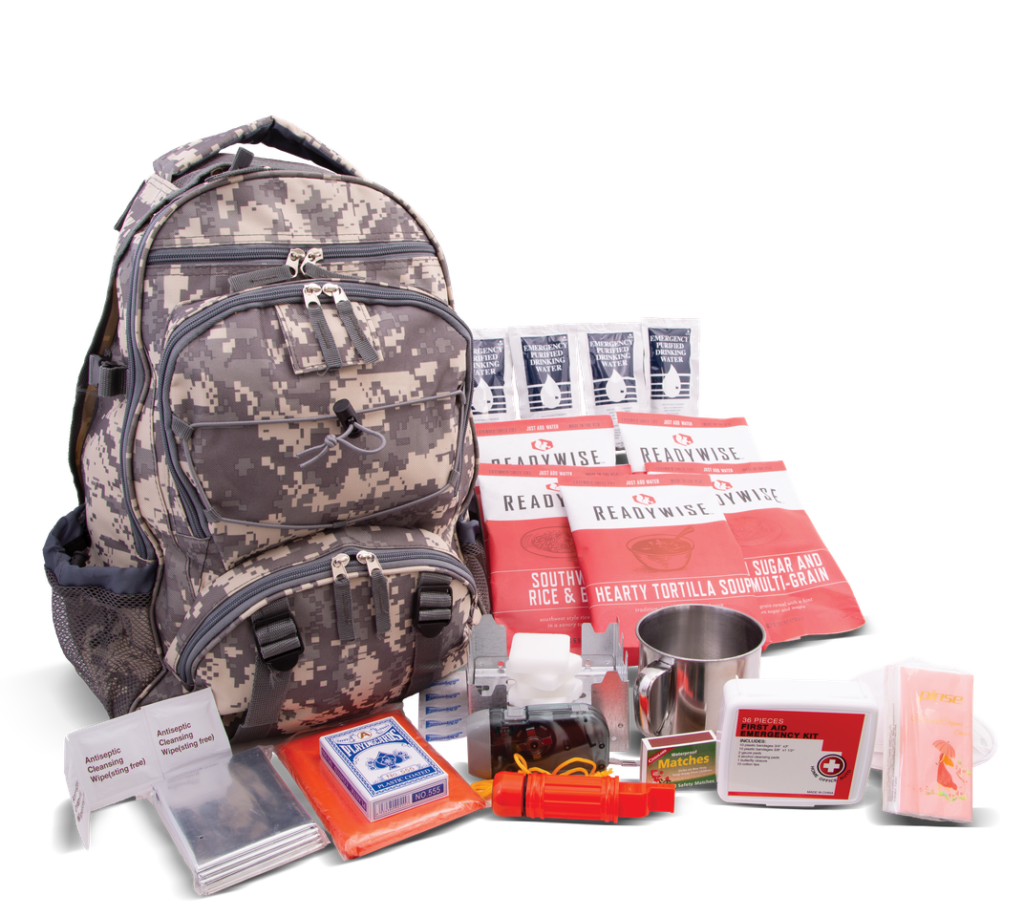Essential Survival Gear for Under $100 [FREE DOWNLOAD – Survival Key Three Tool & Skill Checklist]
Bushcraft, Cordage, Foraging, Knots, Morale, Nutrition, Shelter, Survival, The Key Three
A tsunami of information about bug out/bug in scenarios has swept over the survival community in the last ten years or so. There are posts that discuss the best bug out bag and books about the ultimate bug out vehicle and checklists of bug in supplies and videos showing how to assemble a bug out vest. And many of them are filled with great, valuable, actionable information.
But what is the essential survival gear that, with the proper skillset, would keep you alive long enough for you get from somewhere dangerous to somewhere safe in just 72 hours?
(Are you bugging in? Take a look at Jason Hunt’s book, “The Art of the Bug In“.)
At the The Valiant Outfitters School we teach that there are three key concerns in a survival situation. We call them The Key Three: shelter, water, food. On average, the human body can exist three hours exposed to the elements; three days without water; three weeks without food. So, we teach the skills needed to provide shelter, water, and food in that order of priority.
Many survivalists and bush-crafters include fire as a fourth concern for survival. The Valiant Outfitters philosophy is that fire is integral all three. Fire provides warmth when paired with a well-constructed shelter. And fire can used to boil water is the most reliable way to purify water. Cooking food expands the possibilities of edibles in the field.
Think of it this way, our survival mission is to warm, hydrate, and feed our bodies, but building a fire is the prime directive.
Ground Rules for Choosing
Essential Survival Gear
First, essential survival gear should be just what the name implies: essential. What tools do we need to accomplish The Key Three for up to 72 hours without any redundancy?
Part of our approach to The Key Three is that a bug out bag or kit should have at least three tools to accomplish each of the key three (and I like repeating themes like the number 3). The tools are classified into three levels. A Level One tool is a pre-fabricated or commercially manufactured tool. It’s something that is going to work 99.9% with minimal skill level. A Level Two tool can be either pre-fabricated or sourced in the field with some basic bush-craft skill. Level Three tools are completely sourced in the field and require a considerable skillset.
Let’s use fire as an example. A Level One fire tool is a Bic lighter or something like it. A Level Two fire tool might be a Ferro rod or Fresnel lens. A Level Three fire tool is something like a bow drill sourced in the field, few or none of the parts were in my kit when I left the house. Level Three tools completely sourced in the field and are completely dependent on skill.
It significant skill set isn’t necessary for success with a Level One tool. A person under considerable duress should still be able to use a Level One tool. Even with my background as a survival instructor I’m going to choose a Bic lighter over a Fresnel lens or bow drill to start a fire in a worst-case scenario.
All of the essential survival gear listed below is either a Level One or Level Two tool.
Second, multi-taskers get extra credit as essential survival gear. If it’s something on the border line of essential and can provide multiple components of the Key Three, then it gets put on the list. I love my little Buck 055 pocket knife. It’s a non-negotiable every day carry (EDC) for me, but it’s not an essential survival knife because it’s very limited. I’m certainly not going to ask it to baton wood. The more my essential survival gear can multi-task, the less of it I’ll have to carry.
Which brings us to rule number three. A complete set of essential survival gear should take up very little space. It might even qualify as EDC. The average person should be able to carry all of it without a pack.
About bug out bags, please understand that I’m not a bug out bag hater. To the contrary, I’m an advocate of bug out bags. I’m one of the earliest proponents of bug out bags. My EDC backpack is also my bug out bag. I’m so convinced that bug out bags are a necessity that I encourage all of our Valiant Outfitters students take Creek Stewarts’ 5 “Day Bug Out Bag Challenge” at outdoorcore.com and build their own bug out bag. (Creek practically invented the concept of bug out bags.)
The idea of essential gear is for everything that I need, for a 72 hour journey to safe place, is at arm’s reach with minimal impact to my daily life. It should all fit into a brief case along with all of my usual paper work and books. Or into a school backpack without displacing my 64 Color Box of Crayolas and composition book. Or into the glove box in my wife’s Subaru so that, in the unthinkable scenario that I’ve forgotten my backpack, I can grab the essentials out of the glove box and make a dash for it.
Fourth, the entire kit should be relatively inexpensive; less than $100. It can also be the starter gear for a full-fledged bug out bag. All of the essential survival gear listed below is on our list of “what to bring” to The Valiant Outfitters Intro to Wilderness Survival Course.
Finally, and this is the most essential piece of gear, it includes the skill necessary to utilize it all. There’s a great saying, “Your pack might be full, but there’s always room in your brain.” Read a blog post, watch a Youtube video, take a wilderness survival course, AND practice, practice, practice. This last part is where most people fail. Even a Bic lighter is useless if we don’t know how to harvest tinder, kindling, and fuel wood. And all the cordage in the world isn’t going to support a tarp if we don’t know how to tie some basic knots. (By the way, I even apply the Rule of Three to knots. Only three knots, the Overhand Knot, the Taut Line Hitch, and the Evenk Hitch, are necessary to survive a significantly bad day, but that’s another blog post.)
I’ll provide links to purchase all of the gear listed. The per unit price will be listed to stay under the $100 limit, but the links will include bulk pricing so that the whole family can be outfitted.
(This post contains Amazon Affiliate links. Valiant Outfitters receives compensation for purchases made through qualifying links.)
Essential Survival Gear
Shelter and Fire
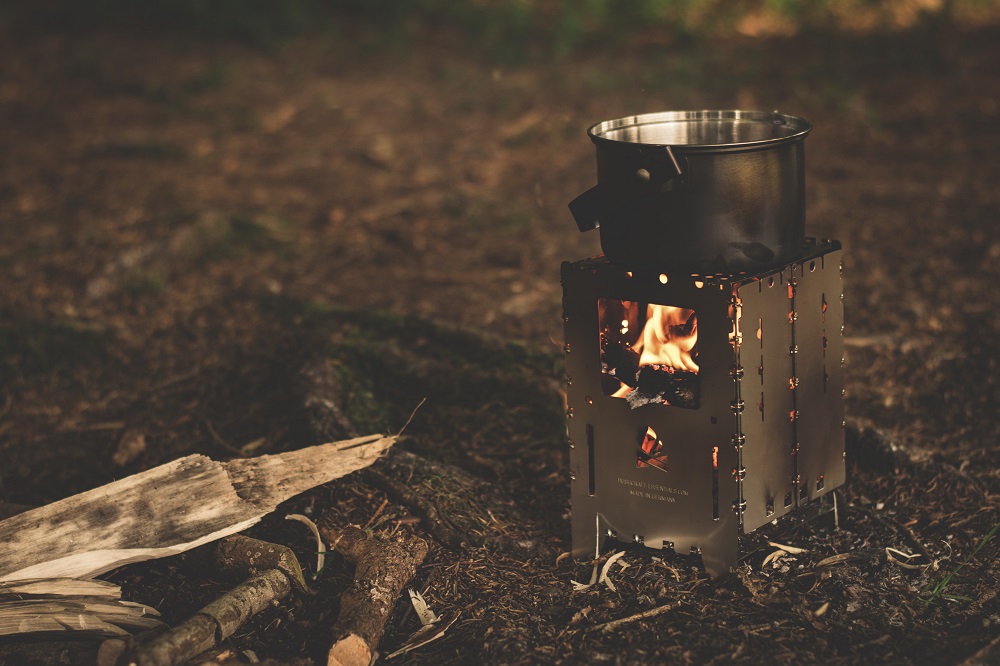
Lighter – Classic Bic Lighter $1.00
As I said earlier, fire makes all of The Key Three possible. It can be used to warm us, it can be used to purify water, it can be used make food edible, it can signal for help, and it improves moral. In a survival situation, we need a fire and we need it sure and fast. This where the mighty Bic lighter shines (pun intended) and can’t be beat for ease of use and success. The only knock I have on Bic lighters is that they can fail to produce a spark, but those instances are extremely rare.
Ferro Rod – Holtzman’s Ferro Rod $12.98

Fire is imperative for survival. It’s the foundation of The Key Three, so it’s the one area where we want both a Level One and Level Two piece of essential survival gear. Sometimes the Bic needs a backup and with just a little practice, using a Ferro rod is slightly more difficult than using a lighter. Most Ferro rods come with a striker, but even the striker isn’t essential, so technically it can be tossed from the list. On second thought, keep the striker because it’s so small. But there is a piece of absolutely essential survival gear that can act as a striker if we lose it.
Survival Blanket/Tarp – Bearhard Emergency Blanket $25.97

Click on the image to purchase a Bearhard Emergency Blanket through the Valiant Outfitters Amazon Affiliate program.
The Bearhard Heavy Duty Emergency Blanket is a life-saver, literally. Its reflective properties (up to 90% of your body heat) are much like the super light-weight emergency blankets that come in bargain survival kits. The simple application in a survival situation is to hunker down and wrap it around yourself.
But it beats those thin, crinkly space-blankets because it is thick enough to be setup as a lean-to or other tarp configuration with tie downs at the corners.
The Bearhard comes in colors ranging from bright orange, for those that want signal for help from search-and-rescue, to digital camo for those who want to survive “under the radar.”
The Bearhard is the one piece that may break the size limitation, so a standard space blanket can be substituted, but remember that your skill set will need to be elevated to effectively use it to erect a shelter.
Cordage – MIL SPEC 5040 Paracord $6.99

Get 50 feet of 550 paracord and cut it into…
- 1 length of 30’
- 4 lengths of 5’
With these lengths, I can make a ridge line with the 50’ and up to 4 tie-downs with the 5’ lengths.
The 30’ length can be processed down to the inner twine as fishing line, to repair other gear, to replace shoe laces, as dental floss…you get the idea. It’s a multi-tasker.
Fixed Blade Knife – Morakniv Companion $14.96

A knife is listed under “shelter” because much like fire, it’s use supports all of The Key Three. Survivalists use their knife to process wood, harvest and cook food, create other tools, repair gear. It’s a multitasker.
As convenient as folding knives are, they just can’t be trusted to take a licking and keep on ticking. There are some pretty robust folding knives on the market, but engineering the strength of a fixed blade cutting tool into a folder drives up the price.
Ideally, the sharp dressed survivalist bush-crafter wants a full-tang knife (check out my friend Brian Leggat’s “Best Bushcraft Knife Buyers Guide” at buschraftersurvivalacademy.com) But like robust folding knives, full tang knives would drive the cost of our list well over $100.
The Morakniv Companion is a great starter survival knife. With a stainless-steel blade that measures just under 3.9 inches long and an overall length of 9 ¼ inches the Companion is a great entry point into the world of bush-craft cutlery; especially at a price point of around $20. It’s easy to sharpen and holds an edge well. The high-friction handle is ergonomic for most hands and it comes with a matching sheath, for the fashion-conscious survivalist.
It’s not the beefiest knife out there, and I’d never use it to baton a log, but it can process as much kindling and light fuel wood as you’d need for those 72 hours until you get to your safe place.
Also, the Companion doesn’t work well as a Ferro rod striker right out of the box, it takes some minor modification. You can learn how in this video by master knife maker Kyle Noseworthy.
Essential Survival Gear
Water
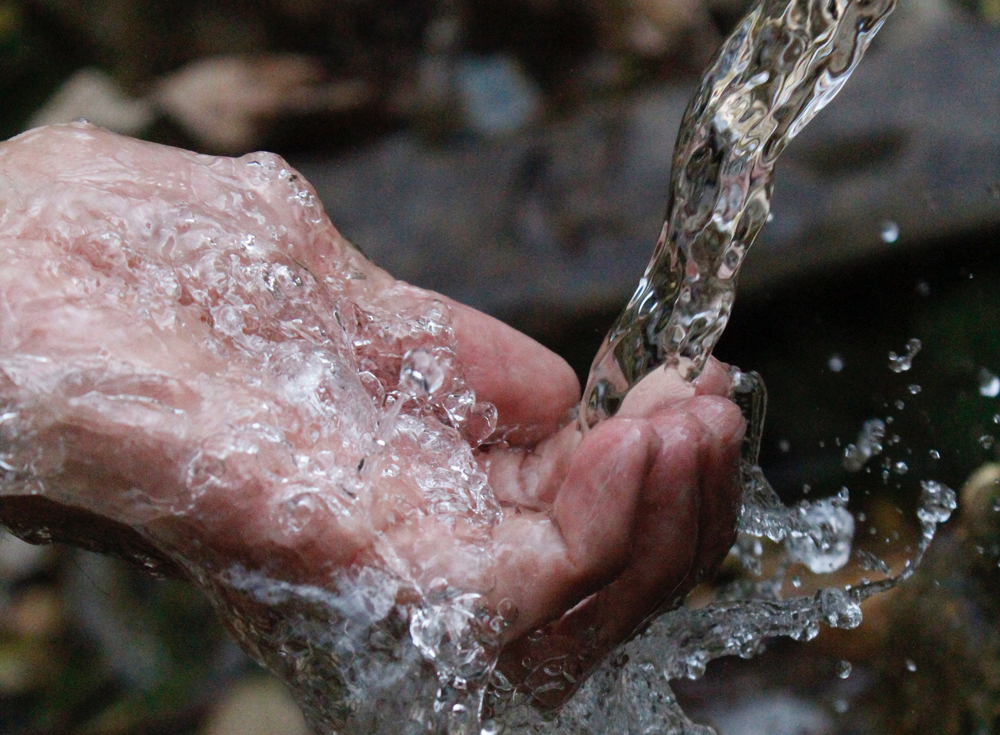
Water Purification
Sawyer Mini Water Filtration System $19.97

Hydrate or die-drate.
Technically, we need our essential survival gear to keep us a live for only three days. And the human body can survive without water for three days. But the Valiant Outfitters we say that, “survival is more than just staying alive.” Sure, I might live through those three days without water, but I’m going to be pretty dehydrated after just one day and dehydration can lead to some pretty bad things and lead to some poor decisions that keep us from getting to our safe place.
As long as we have a system to purify water we can be liberal in how we source it. We can gather water from a stream or lake or even a puddle using a cup (see below) or a discarded soda bottle or can, but water gathered from these sources are rarely potable.
The first step in preparing water for human consumption is sifting. This is simply removes any big chunks, such as sand, grit, leaves, branches, etc. Water can be filtered through just about any cloth like a shirt or scarf or even baseball cap. But filtering doesn’t make the water safe to drink.
All, or almost all, of the harmful chemicals, microbes, bacteria, protozoa, etc. must be filtered or the water purified before you can drink it safely. One of the most effective ways to purify water is by boiling it, but boiling is time consuming. There are also purification tablets and ultra-violet light wands, but those have shelf lives and can be expensive.
To make wild water safe to drink I use the Sawyer Mini Water Filtration System. It’s small, light-weight, comes with a bladder for collecting and carrying water, removes 99.99999% of all bacteria and protozoa, and is rated to filter up to 100,000 gallons of water. I prefer it to systems like the LifeStraw, because I can bring the water to my mouth, not my mouth down to the water, and gravity systems that make me wait.
Some people complain that the Sawyer water bladder is prone to leaking, but it’s never happened to me. I’ve lost bladders, but never had one break. Even so, the Mini is threaded to attach to most water or soft-drink bottles…MULTI-TASKING!
Essential Survival Gear
Food

Remember The Rule of Three? We can survive three hours without shelter, three days without water, three weeks without food, so food might not even be essential for us to survive until we get from a dangerous place to a safe place. In fact, many of us, myself included, could probably improve our physiques with a few calorie deficit days. But much like lack of hydration, lack of nutrition might not kill us, but its side-effects can be devastating.
Nutrition Bars – Cliff, Kind, Nutrigrain, etc. – 3 for less than $5.00
The Level One tool for nutrition is food. Yep, it’s that simple. Grab some Cliff, Kind, or Nutrigrain bars and throw them in your briefcase, purse, or backpack.
Chicken of the Sea Flavored Tuna Packets – 3 for less than $5.00
Or, if you have a more sophisticated pallet, Chicken of the Sea flavored tuna packets are only slightly larger in size, but much larger in flavor. The tuna packets even come with a plastic fork.
Speaking of eating utensils, I know that we survivalist love to show-off our fancy titanium sporks, but they’re not on the essential survival gear list. Cliff bars are finger food and the tuna comes with its own fork.
Advisory: all of these food stuffs have relatively short shelf-life, so rotate them with your other snacks. A more stable alternative is the humble MRE cracker. MRE crackers, with a 25-year shelf life, are available for a dollar a piece at just about any military surplus outlet.
Metal Cup – Ozark Trail Steel Cup $7.20

The Level Two essential survival tool for nutrition is a metal cup like the Ozark Stainless Steel Cup. It’s on the border line of essential/not-essential because we’ll be carrying our Level One nutrition bars and its bulky but a steel cup is a multi-tasker. I can use it as a back-up in case I forgot to replace the Nutrigrain bars I through in my briefcase before Tom Brady started winning Superbowls. It’s handy for steeping some pine needle tea or frying slices of bark bacon.
And a steel cup multi-tasks as a back-up water purification tool (boiling).
Essential Survival Gear
Wrap It Up
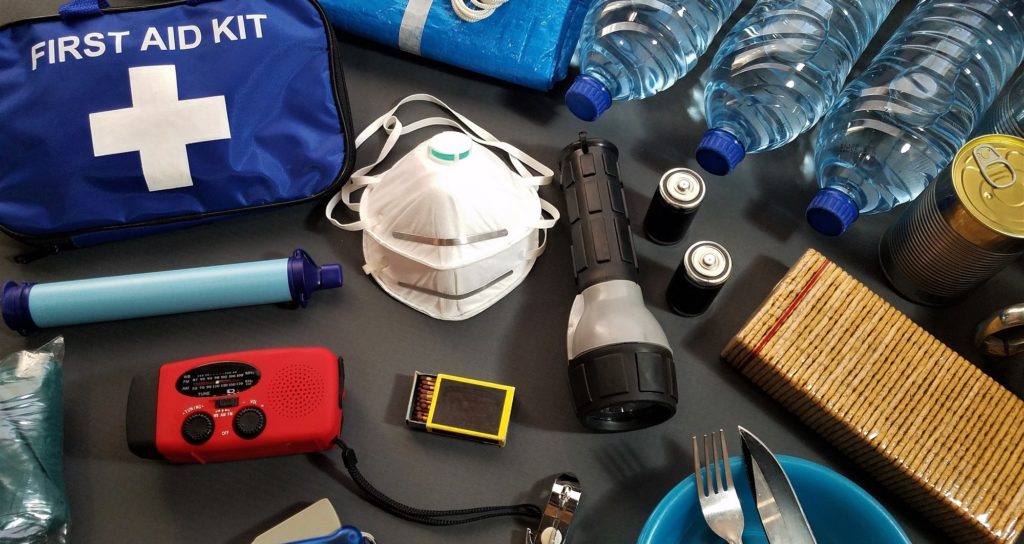
I’m going to add one more piece to the list our list of essential survival gear, it’s sort of a secret weapon: Leuko Sports Tape. Leuko tape is a super multi-tasker. It’s a Bandaid replacement, can be fashioned into a sling, a repair tool, can be processed into cordage, used to secure a tarp on the ridge line, the sky’s the limit with this stuff. A fifteen-yard roll of 1 ½ inch Leukotape is $7.88. Peel it off the roll and wrap in around your lighter for more portability.

Click the image to purchase BSN Leukotape through the Valiant Outfitters Amazon Affiliate program.
How’d we do? Well, the total is $99.95, so we stayed under budget. (All prices were accurate at the time of writing.)
How about size? With the exception of the Bearhard survival blanket everything easily fits in my wife’s glove box. Even with the blanket I can fit it all in the glove box, but the owner’s manual needs to be jettisoned. If a standard space blanket is substituted for the heavy duty then we can count it a success in both price and portability.
Essential Survival Gear
Upgrade
OK, let’s “guild the lily” a little bit. Actually, it will be a bit more than a little bit. Sticking to just the essential survival gear is all well and good, but what if we want to upgrade or get a stronger start to building a bug out bag?
I suggest adding a ReadyWise Survival Backpack at $74.99.
$74.99?! “What kind of fast one are you trying to pull here, Joe!”
Please, hear me out. Combined with the Morakniv Companion, Bearhard blanket, and paracord the Readywise Backpack creates a fantastic starter bug out bag for less than $125. It comes with everything else on the essentials list, and then some. It includes 32 total servings of food (beans and rice, tortilla soup, brown sugar cereal, etc.) and enough water pouches for 3 days. It also has a portable stove (with fuel tabs), a steel cup, squeeze flashlight, whistle, waterproof matches, emergency blanket, poncho, and a first aid kit with a N95 dust mask.
All of this comes in a backpack. Admittedly, the backpack is a flimsy and bit sub-par (I’d never use it for everyday or bush-craft use), but it’s more than adequate to keep all of your essential survival gear handy. Remember, I’m suggesting it as a starter bug out bag. Upgrades in gear are inevitable as you increase your skill set.
Essential Survival Gear
Conclusion
There you have it. The Essential Survival Gear plus a little bit more. I’m convinced that anyone can survive the trip from a dangerous place to a safe place in less than three days with this gear, if they keep their skillset strong. Your pack may be full, but there’s always room in your brain.
And remember, survival is more than just staying alive.
